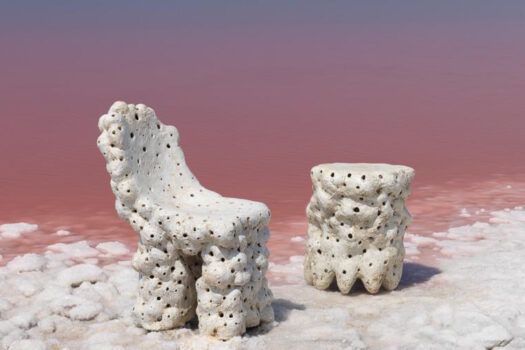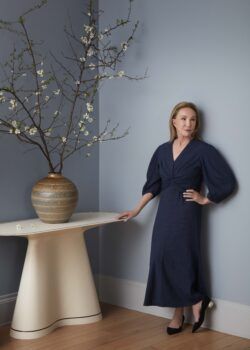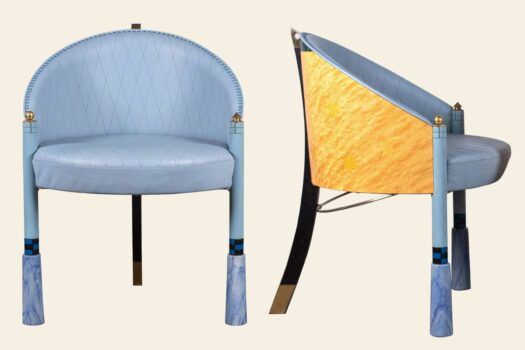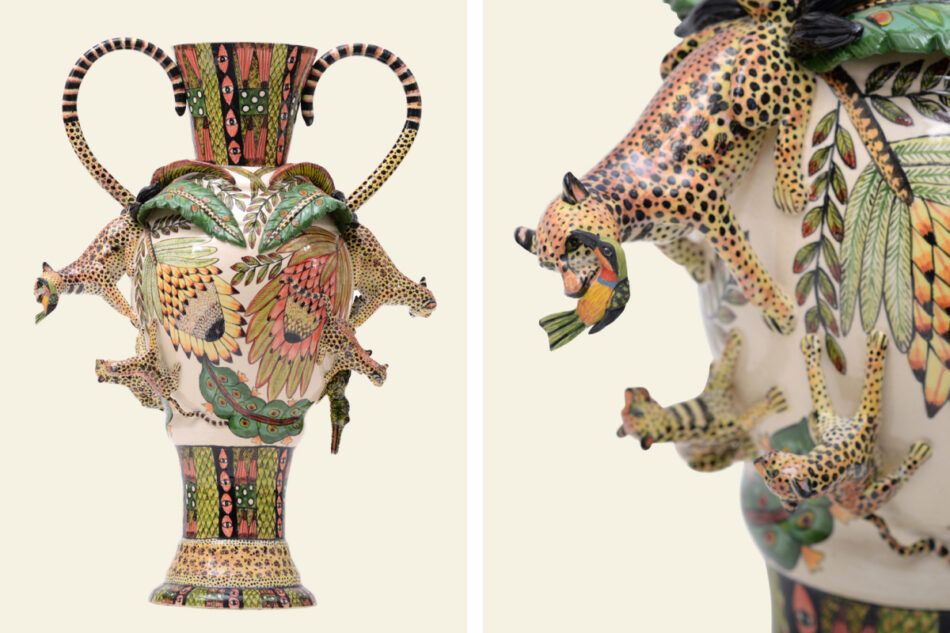
Five hours south of Johannesburg, in a remote corner of the KwaZulu-Natal province of South Africa, scores of artists are channeling Zulu artistic traditions and age-old skills to create intricately sculpted and vividly painted ceramic works unlike any others in the world.
An extraordinary 20-inch-tall leopard vase from Ardmore Design, the best-known of the local pottery studios and one that has achieved international renown, represents a pinnacle of achievement. “It’s top of the line,” says Ed Pascoe, of Miami’s Pascoe Gallery. A leading dealer in Ardmore and an expert in South African ceramics, Pascoe is offering the vase on 1stDibs, along with other handcrafted works from the region. “Each piece is unique,” he says. “There are no molds and no duplicates.”
The colorful vessel, made in 2012, represents about two months of work on the part of two revered artists: Thabo Mbhele, a sculptor, and Punch Shabalala, a painter. “It was first thrown on a wheel to get the shape. Then Thabo hand-built the leopards and crocodile, shaped the leaves and rolled the leopards’ tails,” Pascoe says. After a firing took the piece to the bisque stage, Shabalala decorated it with bands of Zulu-inspired patterns and protea flowers and painted the animals naturalistically. Glazing and a final firing completed the labor-intensive process.

Pascoe, a lifelong antiques dealer originally from Philadelphia, also happens to have a degree in political science with a concentration in Southern African studies from the University of Notre Dame. He has been traveling to South Africa since the late 1970s, when he co-owned Pascoe & Solomon, a Madison Avenue gallery specializing in English ceramics like Wedgwood and Royal Doulton in operation until 1984.
Pascoe moved to Miami and opened his current gallery in 1987. At first, he bought English porcelain and ceramics in South Africa for resale in the United States. With the end of apartheid, in 1994, “the country was booming,” he says. “I was meeting a lot of people and forming relationships. I discovered Ardmore and started exporting it to the U.S.” Founded on a remote farm in 1985 by Fée Halsted, a white South African, Ardmore is widely collected and has collaborated with such luxury brands as Hermès, on scarves and other accessories, and Cole & Sons, on lush wallcoverings.
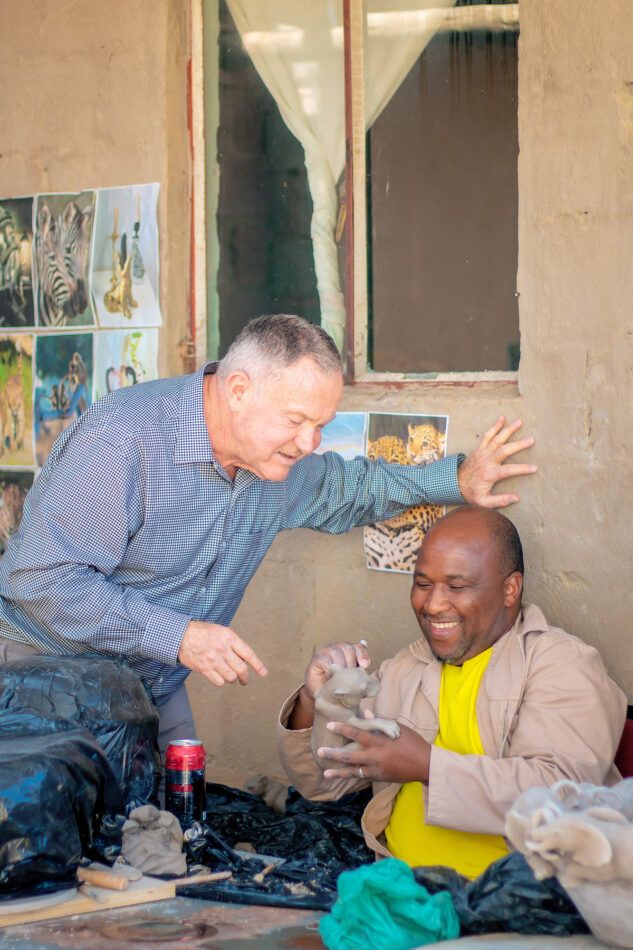
Pascoe eventually came to focus on ceramics produced in South Africa and representing the work of some 42 independent artisans creating pieces for companies including LoveArt Ceramics, Senzo Duma Ceramic Arts and Wiseman Ceramics, where Mbhele is now the head sculptor. “They’re not employees of Pascoe Gallery,” Pascoe clarifies. “We buy their art and represent it exclusively. I wouldn’t call it philanthropic, but it’s quite a responsibility. Each artist supports about 20 family members, and the direct benefit is big.” Many artists have been able to build homes for their families with studios and electric kilns.
The vast majority of artists with whom Pascoe works have Zulu heritage, as do most of the ceramic artists in the region. “They have a rich history of textile and pot making,” he says. Every family has cattle, goats or sheep, which are traditionally tended by young boys, Pascoe explains. And while grazing the animals, they often amuse themselves by crafting tiny animal figures using clay soil from the riverbeds. That’s why, Pascoe says, almost all ceramic sculptors are men, while women do most of the painting. “From the time they’re little boys, they know how to sculpt.”
Pascoe still travels to South Africa at least once a year. “With technology, it’s become very easy to see the work — we communicate all the time on Zoom and WhatsApp,” he says. “The only downside is the power outages.”


